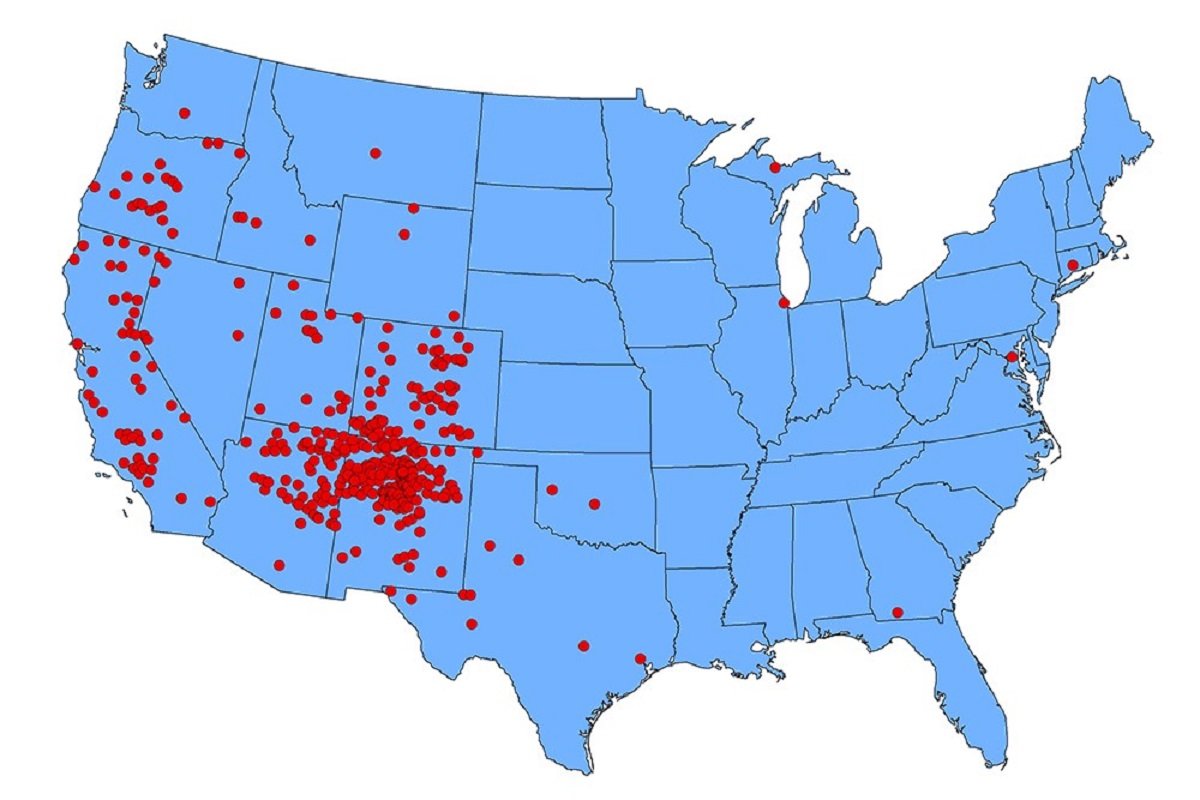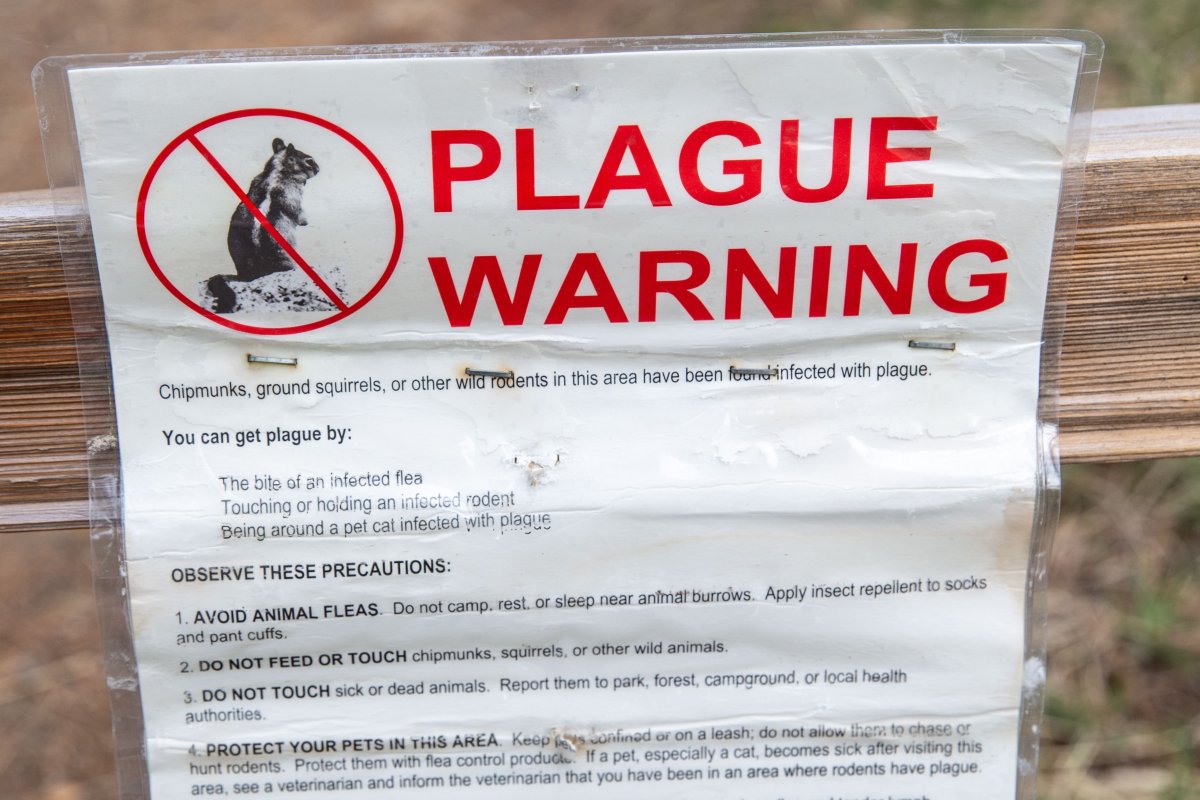A map of the contiguous U.S. shows where cases of the plague have occurred in humans between 1970 and 2020, revealing northern New Mexico and neighboring Western states as the worst affected by the disease.
In the 50-year period, New Mexico had more than half of plague cases in the U.S.—253 out of a total of 496—followed by Colorado with 66 cases, Arizona with 65 cases and California with 45 cases, according to figures compiled by the Centers for Disease Control and Prevention (CDC). There were 19 cases in Oregon in the time period and 15 in Utah.
Several other Western and Southern states have had a handful of cases, while five states in the east have had one instance of plague illness each.
The CDC says that more than 80 percent of plague infections in America were bubonic—one of three types—and in recent decades there has been an average of seven cases each year. The worst year for infections in the time period was 1983, when there were more than 40 cases.

This comes as health officials in New Mexico announced its first death from plague since 2020, which was also the first case in the state since 2021.
The New Mexico Department of Health said on Friday that a man from Lincoln County, in the central region of the state, to the southeast of Albuquerque, had died after being hospitalized by the disease.
"This tragic incident serves as a clear reminder of the threat posed by this ancient disease and emphasizes the need for heightened community awareness and proactive measures to prevent its spread," Public Health Veterinarian for the state Erin Phipps said.
Plague is caused by the Yersinia pestis bacteria, and has been found in human remains dating as far back as 5,000 years ago. It is usually carried by fleas or rodents such as chipmunks, prairie dogs, squirrels and mice, but can also be transmissible between humans.
Bubonic plague can cause a fever, chills, extreme weakness, abdominal pain, shock and bleeding into the skin and other organs. It is usually caused by being bitten by an infected flea.
Septicemic plague can see patients also have skin and other tissue turn necrotic and can arise from untreated bubonic plague. It is the result of flea bites or from handling an infected animal.
Pneumonic plague occurs when a patient also develops pneumonia, which can arise when they inhale droplets containing the bacteria that then spread to the lungs. It is the most serious form of the disease and the only one that can spread between people.
There is no vaccine to inoculate against Y. pestis but instances of infection can be treated with a course of antibiotics.
"Without prompt treatment, the disease can cause serious illness or death," a CDC spokesperson told Newsweek.

In the U.S., the bacteria primarily circulates among rodents and fleas that feed on them, according to the CDC. Infected fleas can then directly bite humans or household pets, or pets can transmit the disease through interacting with infected rodents.
While the plague caused devastating pandemics in Europe in the Middle Ages, it is thought to have first been introduced to the U.S. in 1900 by rat-infested steamships that arrived on the West Coast from Asia and other affected areas.
The last urban epidemic occurred between 1924 and 1925 in Los Angeles before plague spread among rodents to neighboring states, becoming entrenched in the rodent populations in the region.
"The risks are generally highest in rural and semi-rural areas, including homes that provide food and shelter for various ground squirrels, chipmunks and wood rats, or other areas where you may encounter rodents," the CDC spokesperson said.
Research suggests that the concentration of cases in New Mexico is caused by the geography and ecology of the state.
A 2007 study found human cases in the arid state tended to occur in areas where two different types of woodlands met and closer to sources of water. These habitats are where populations of rodents are thought to congregate in large numbers, increasing transmission.
The CDC spokesperson said that it was not just the specific habitat that was a determinant of the frequency of human plague, but the density of people in that habitat.
"Overall, New Mexico appears to have the highest number of people living in plague-prone habitat—and so the highest number of human infections," they added.
Update 3/13/24, 3:35 a.m. ET: This article was updated to include comment from a CDC spokesperson.
Uncommon Knowledge
Newsweek is committed to challenging conventional wisdom and finding connections in the search for common ground.
Newsweek is committed to challenging conventional wisdom and finding connections in the search for common ground.
About the writer
Aleks Phillips is a Newsweek U.S. News Reporter based in London. His focus is on U.S. politics and the environment. ... Read more
To read how Newsweek uses AI as a newsroom tool, Click here.








